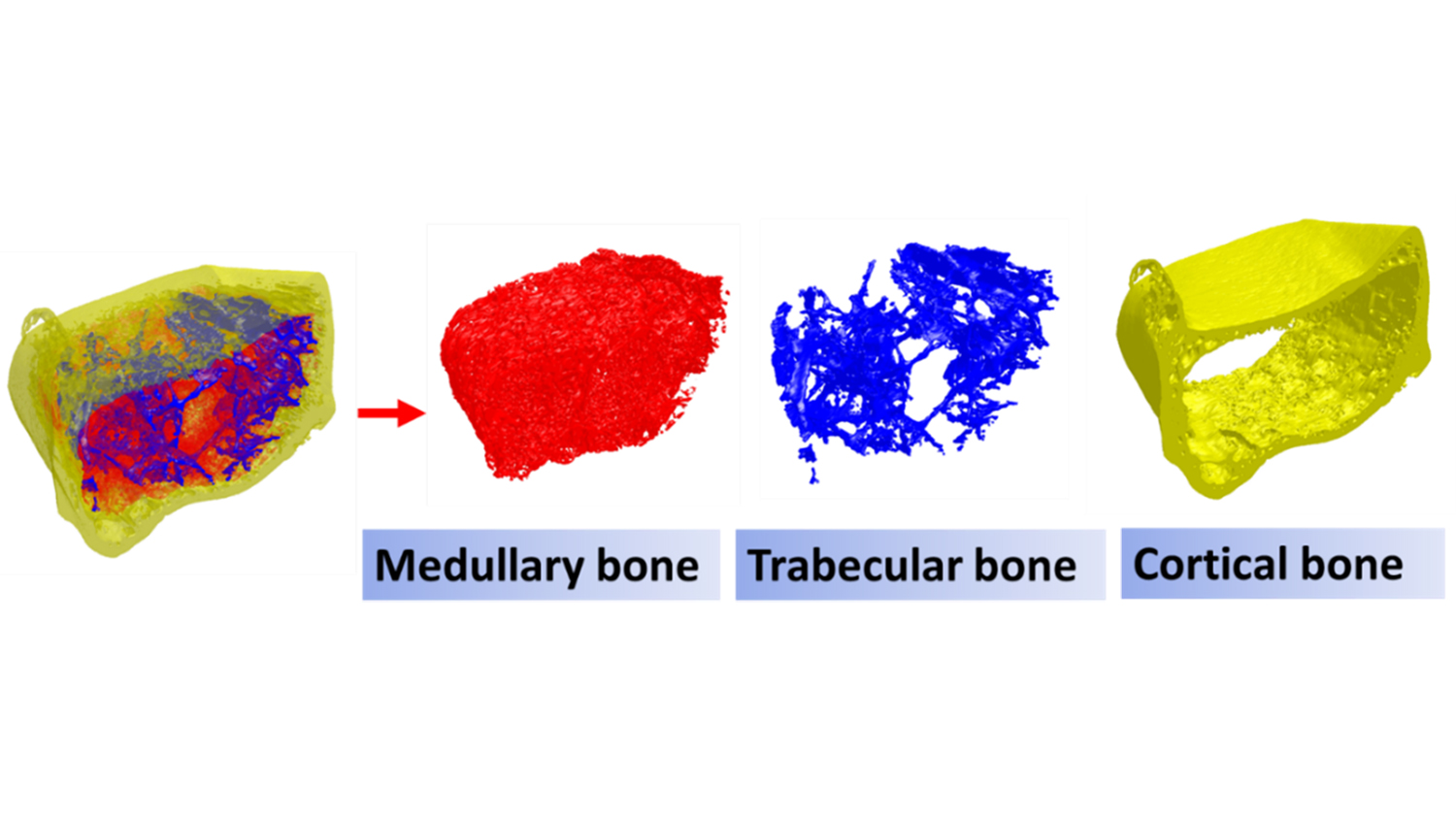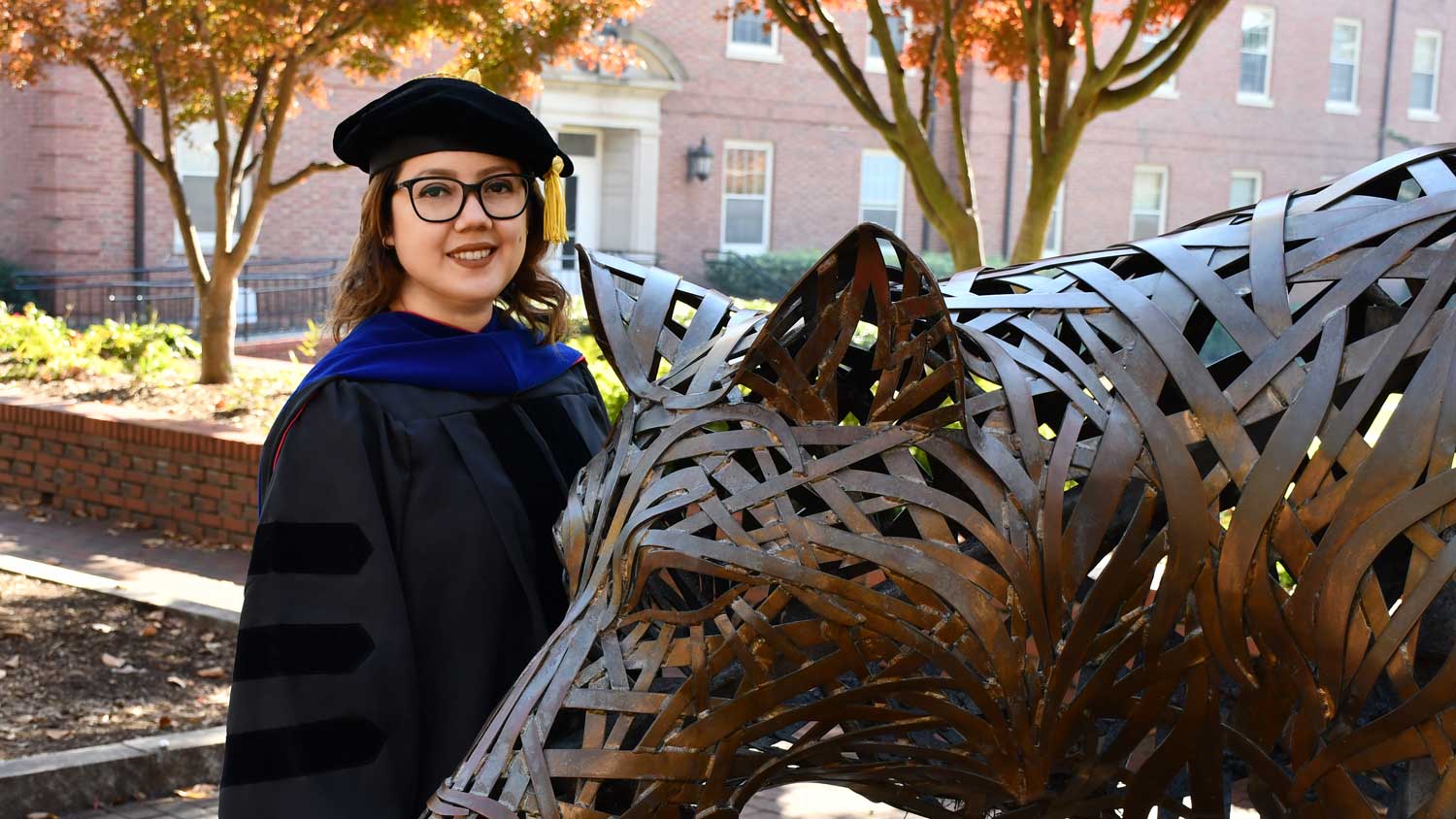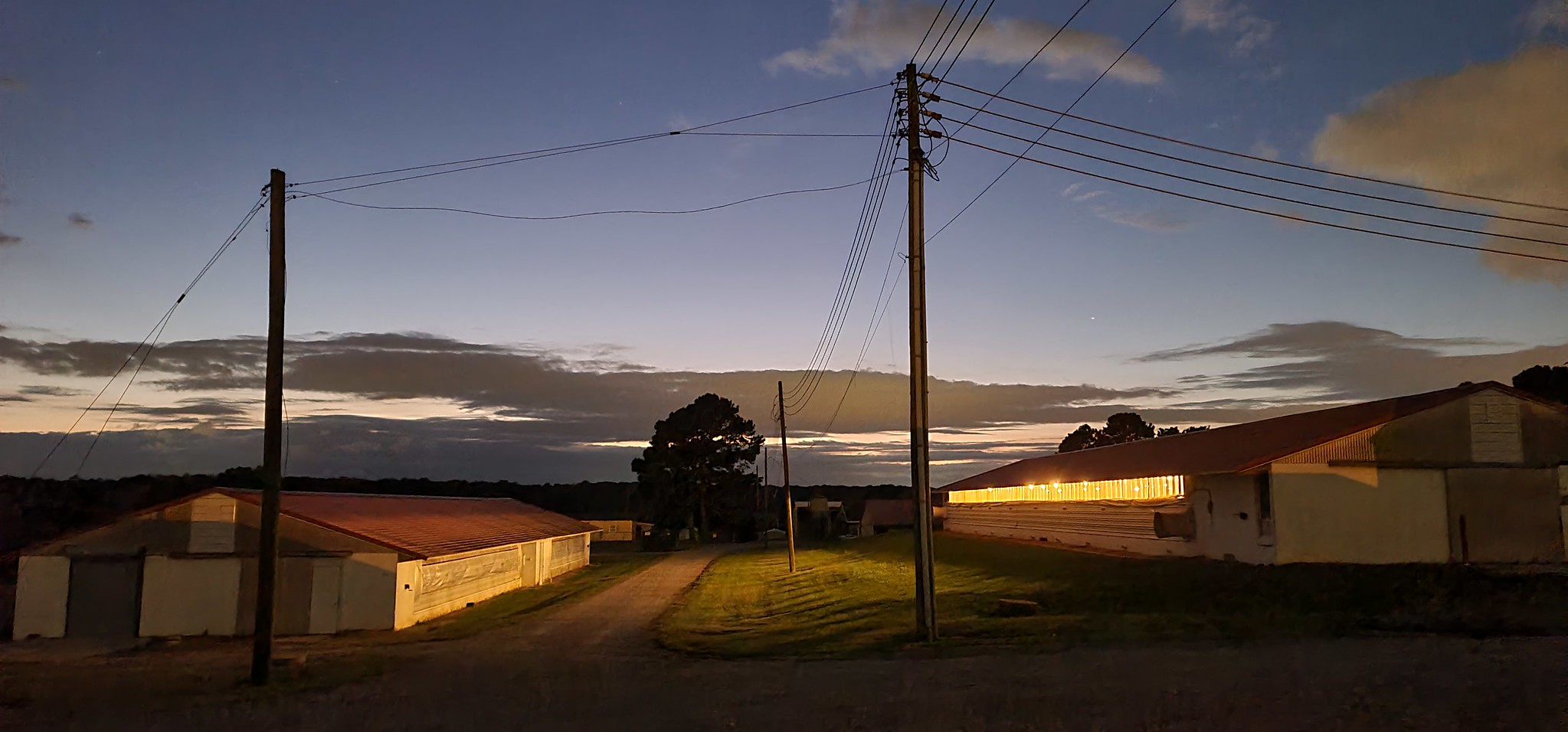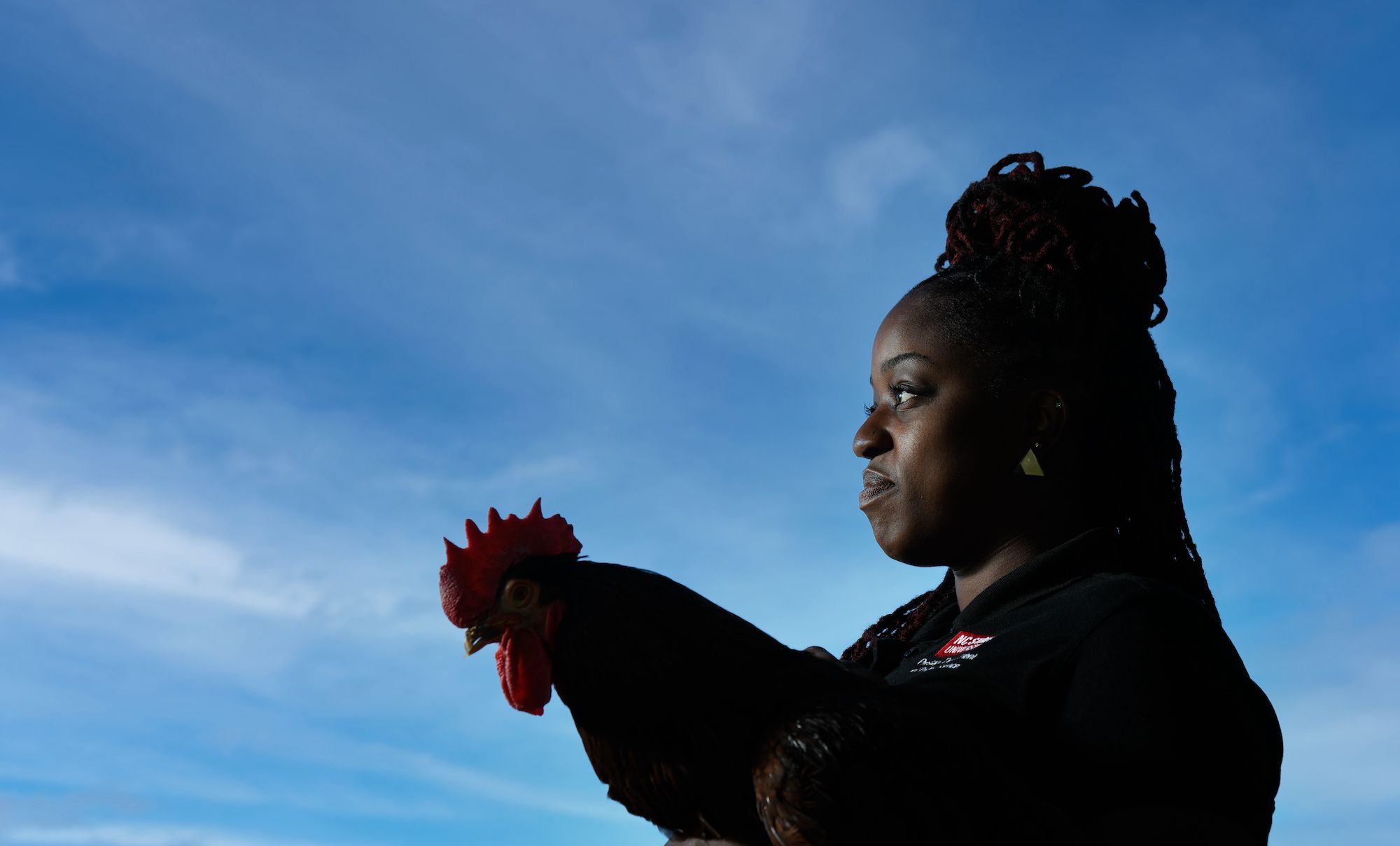Micro-CT Adaptation Shines Light on What’s Inside a Chicken Bone

(3D) Automated bone separation algorithms video from I am Sean, Sean Chen’s YouTube channel.
Imagine it’s dinner time and you’re craving something a little decadent. Maybe fried chicken and french fries, followed by some Howling Cow ice cream. As you’re enjoying your meal, maybe you’re wondering ‘what’s the connection between this crispy, not-too-greasy french fry, my bowl of creamy ice cream and chicken health and welfare?’. (Ok, maybe not, but you could be.)
The answer is X-ray microtomography, or micro-CT, a way of scanning and creating 3-D models of objects without damaging the original. The technique has been used by food scientists to better understand how frying works and how to keep ice cream creamy and delicious.
Now, new research from Chongxiao (Sean) Chen and Woo Kim has shown that micro-CT isn’t just helpful for foodstuffs — it can help poultry scientists learn more about chicken bones.
Micro-CT’s usefulness for understanding animal physiology comes from its high resolution, especially compared to clinical CT scanners, which are “good for whole skeleton analysis,” said Chen, but not for detailed structural analysis.
In a recent Zoom interview, Chen, now a Research Assistant Professor in the Prestage Department of Poultry Science, explained the importance of the research, completed while he was at the University of Georgia.
“We adapted micro-CT to advance poultry research…to open a door…to tell people we have new tools available to investigate more bone structure details,” he said. He added that the tools will “expand understanding of chicken bones.”
But what’s significant about chicken bones? Why study them? According to Chen, laying hens and broiler (meat) chickens are both susceptible to bone fractures, a cause of lameness. As they age, laying hens are at risk of developing osteoporosis, while broiler chickens put on significant muscle mass while growing, which can stress their leg bones and lead to fractures and lameness. Lameness is associated with higher mortality rates on broiler farms, making it a significant problem for the poultry industry.
Even if a fracture doesn’t cause an animal to die, it can cause a variety of problems, including
- discomfort and pain, an animal welfare issue,
- infections and bone lesions leading to lameness, an animal health and welfare issue,
- bacterial infections moving into muscle, a food safety issue, and
- reduced egg production and quality in laying hens, an economic issue.
Osteroporosis is common in older laying hens and has a number of negative impacts, including higher fracture risk, reduced egg production and poor egg quality. Knowing how medullary bone forms and how the three types of bone relate is important for addressing or preventing these issues.
As poultry production increasingly adopts antibiotic-free methods, broilers are facing more gut health challenges. Intestinal health issues and leakage put bones at a higher risk of infection, especially when bones have micro-fractures, resulting in lameness (bacterial chondronecrosis with osteomyelitis, BCO). Understanding more about bone structure could help prevent the problems and contribute to developing response strategies, alleviating burdens on the animals and the producers.
With all of the issues connected to bone health, the subject has been increasingly studied by poultry scientists, with significantly more research appearing in the last five years than in the decades before. Standard research methods include bone ash analysis, to determine mineral concentrations, and bone breaking strength, to determine how much force it takes to break a bone.
But these tests don’t provide insights into the structure of a bone, leaving researchers with an incomplete picture of how changes in diet or environment impact overall bone health.
“This [micro-CT] method actually gives a new dimension of how to do bone quality assessment, to give much more information compared with before,” Chen said.
Part of the challenge has been accounting for all of the parts of a chicken’s bone. The main takeaway from the research article is that taking medullary bone into account increases the complexity of scanning the bone and requires the kinds of adaptations presented by Chen and Kim.
This method…gives a new dimension of how to do bone quality assessment.
Unlike mammals, chickens and other avian species have medullary bone, “a special…tissue forming in the bones of female birds during egg laying.” The medullary bone acts as a calcium supply, needed to create an egg’s hard shell. The presence of medullary bone, in addition to trabecular and cortical bone, makes it harder to build 3-D models of the bone using previously available micro-CT methods. What works in small mammals in like mice and rats doesn’t directly translate to the larger and more complex chicken bones.

Chen and Kim’s research addresses this issue by adapting micro-CT methods for use with laying hens. Their article introduces an algorithm that can automatically separate all three bone types, shining light on the entire bone structure.
While the research focused on laying hens, the micro-CT adaptations have applications for broiler chickens, too.
With better bone models, researchers can expand their understanding of chicken bone physiology and osteoporosis. Increased understanding of what’s happening will aid researchers in explaining – and potentially preventing – how and why fractures and osteoporosis happen.
What’s next for Chen, as he builds a research program at NC State? “I don’t really know much about turkeys. I’m interested in seeing what turkey bone problems [exist]” Chen said.
He has multiple interests, including nutritional ways to improve turkey bone health, observing behaviors like walking to gain insights into underlying bone health and studying how vocalizations might indicate turkey health (or signal illness).
Chen said, “I’m really interested in using these new technologies in poultry production, such as micro-CT. We can bring [these technologies] to poultry and solve industry problems…we’ve started using these tools already.”
I’m really interested in using these new technologies in poultry production.
Expanding his focus to more poultry species will extend the impact of his research, making it more likely that poultry producers will be able to improve animal welfare and production.
Better animal health and welfare is good for everyone: the animals, the producers and the consumers enjoying their fried chicken (or Thanksgiving) dinners.


